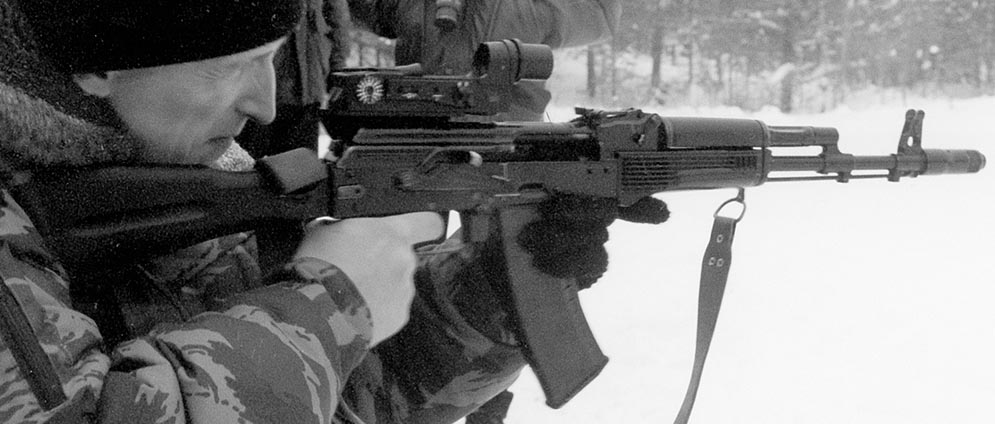By Valery Shilin
To say that the war in Northern Caucasus in the last two years has taught tough lessons to Russian soldiers and their commanders is like to say nothing. In contrast to the actions that took part in Chechnya back in 1995, the combat tactics have been considerably changed to make troops more mobile, and the combat units better adapted for specific missions. Small groups of special deployment became an important factor in “clearing the ground” for advancing larger army formations. Massive army operations are more often substituted by pinpoint assaults of SPETSNAZ units.

Nowadays, Russia’s policy in Chechnya is undergoing further changes. In January this year, President Vladimir Putin declared a new step in this respect. The Army is decreasing their presence, withdrawing major troop units from the Northern Caucasus and giving priority to Special Forces. Nikolay Patrushev, Chief of the Federal Security Service, replaced Igor Sergeyev – Russian Minister of Defense – as a Commander-in-Chief responsible for activities in Chechnya.
It is believed that the missions in this region will be more of a policing, surgical and peacekeeping type. Along with the Federal Security Service (FSS), troops of the Ministry of Interior, Ministry of Justice and other groups of special designation are supposed to be the backbone of Russia’s military power in Northern Caucasus. This does not, however, mean that Army is pulling out from the war theater for good. A limited Armed Forces contingent will be coordinating actions with the above forces of special deployment.
The Russian Defense Industry keeps an alert open eye on these changes. At the end of January this year IZHMASH – Russia’s largest arsenal and both developer and manufacturer of the Kalashnikov and Dragunov small arms systems, in partnership with the “Krechet” SPETSNAZ group, a division of the Udmurt Regional Ministry of Justice (Minjust), organized the first all-Russian Convention of SPETSNAZ.
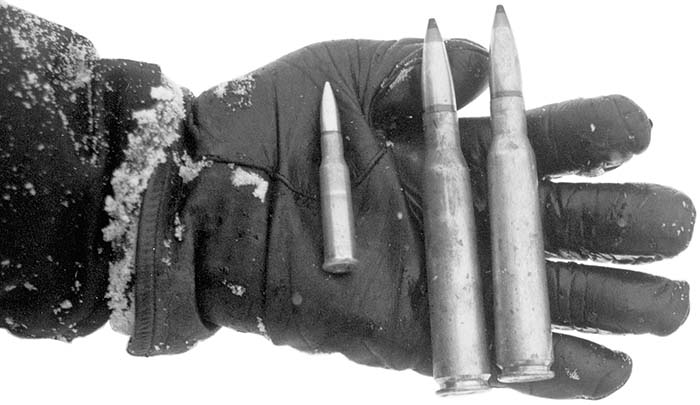
Attending this event were representatives of sixteen Regional Minjust Departments of SPETSNAZ as well as officers of the Anti-terrorist Center of FSS (“Alpha” and “Vympel”), Special Research Institute of the Ministry of Interior, OMON, SOBR and others.
As part of the program, demonstration firings were organized at the Test Shooting and Training Facility in the vicinity of Izhevsk, a city in Western Urals. IZHMASH hosted delegates from 18 defense enterprises of the Urals and Siberia. Special guests were invited from Moscow and the Republic of Belarus – a member of a new State union.
It was an opportunity for the Industries to demonstrate their newest developments in small arms, ammunition, optics, laser technology, combat equipment and military gear. Designers were available to provide advice and consultations on the technical parameters and features of novel weapons. It was a practical move: the Russian defense industry is looking for new orders from SPETSNAZ, and thus offering the most up-to-date equipment for special operations purposes.
SPETSNAZ “Krechet” demonstrated their combat skills operating the types of guns that the group was able to obtain recently from IZHMASH: AN-94 and AK-107 assault rifles, “Bizon” submachine guns, SVDS, SVDK, SV-98 and SV-99 sniper rifles, SAIGA-12K auto-loading assault shotguns and many more. Most of the above weapons were fielded in the operations in Chechnya.

SVDS/SVDK Systems
As seen in the photos, the Russian issue SVD sniper rifle and SVDK have considerable differences. The latter were dictated by the new conditions in the recent theaters of warfare in various parts of the world. Being a firearm designated to destroy single targets, which may be moving, open or behind cover, the SVDK is better adapted for airborne troops and troops carried by armored vehicles. Its overall length of 875mm (34.5 inches) with folded stock is roughly equal to the size of a seated soldier.
The rifle can be operated from a fighting vehicle using it for cover and concealment against enemy small arms fire. The rifle can fire both special sniper cartridges and regular rounds with steel core, cal. 9.3 x 64. It also successfully employs tracer and armor-piercing-incendiary types of ammunition. Externally, the SVD and the SVDK rifles differ in the following:
* SVDK has a folding buttstock;
* a shorter barrel;
* a new conical muzzle brake with teardrop-shaped slots;
* a pistol grip under the receiver;
* handguards made of fiberglass-reinforced polyamide;
* the SVDK construction features no under-barrel bayonet lugs; the bayonet comes in accessory kit;
* the SVDK has a telescoping/folding bipod.
The buttstock, which folds to the right, is made of steel tubular segments and assembled by welding. It is attached to the rear of receiver by means of a hinge similar to that of AKS74. The buttstock lock knob was also borrowed from the Kalashnikov construction. The cheek plate has three functional positions. “Marching order” – the plate is rolled up and locked in a vertical position above the upper bar of buttstock. The other two positions of the cheek in “Firing order” are as follows: (a) locked at the angle above the upper bar of the stock when the operator uses an optic scope or a night vision device; (b) unlocked and rolled down inside the buttstock frame when firing with open sights.
The buttstock end is made from reinforced polyamide. The entire construction of the buttstock is strong enough and can be used in a hand-to-hand combat.
The muzzle is equipped with a mono block, consisting of the front sight base integrated with the flash suppresser. The whole device is attached to the barrel with two pins coming into notches on the upper portion of the barrel end. One significant peculiarity of the new flash suppressor is its conical, funnel-type geometry with four teardrop-shaped, asymmetrically located slots. The lower two slots are placed in such a manner that none of them comes into a central position. The partition between these slots is wider than the one between the upper slots. This is done for the purpose of preventing an excessive upward climb at firing. The other reason is elimination of vertical gas jets. The jets, diverted strictly downwards, would raise unwanted dust in front of the shooter, disclosing his position. Despite the fact that the new brake is 65mm shorter that the one on the SVD rifle, it is in no way less effective in the sense of both suppressing flash signature and decreasing the muzzle blast.
The pistol grip, located under the receiver and attached to it with a single long screw, is also made from thermosetting reinforced polyamide. For the operator’s ergonomic convenience, the trigger and its guard bracket are shifted forward by about 10 mm.

Russian industry has recently provided sharp shooters with a new dedicated sniper round, with the bullet weighing 56 g, that travels with the muzzle velocity of 730 m/sec. The projectile generates muzzle energy equal to 14,900 Joule. Shown is the sniper cartridge with enhanced penetration capability. This feature seems to be a must with Russian snipers, as they want to accurately defeat both body armor and material at extended ranges.

The SVDK rifle has the usual sheet-metal selector on the right side of the receiver. The upper position is “safe”. The lower position at all times places the mechanism into semiautomatic mode. The levers of SVD and SVDK slightly differ in shape: in the latter the side ear has been changed from the lower position to the upper, which is supposed to make its manipulations easier. A top-cover locking lever, which is located in the rear of the receiver of both rifles, is geometrically identical. In SVDK, however, the locking angle is somewhat smaller.

Like the pistol grip, the handguards of SVDK are made from black reinforced polyamide. Their construction has been modified by adding pronounced horizontal ribs to provide an enhanced gripping surface. On the inside surface of the guards there are additional strengthening ribs to increase shock resistance. Similar to the SVD, the new rifle has twelve ventilation openings in the handguards (6 on each side) eliminating a possibility of burning operator’s hands in intensive firing.

Although 60 % of SVD and SVDK parts and components are interchangeable, a deeper insight may offer more differences. The SVDK top cover has been given an extra strength by stamping it from steel sheet 1mm thick. The one in SVD has a thickness of 0.7 mm.
The gas regulator of the new rifle is basically the same, with a few moderate alterations, which do not reduce operational merits of the older version. The piston has no obturation grooves. Outer diameter of the gas piston, internal diameter of the gas tube are 10.5 mm and 14 mm respectively, while in SVD these sizes are 9.5 mm and 13 mm.
Steel bodied sheet metal magazines with prominent reinforcing ribs for both SVD and SVDK rifles hold 10 rounds. No tools are required to load these staggered-column, detachable box-type magazines. The magazines have a hold-open device and thus after the last round has been fired, the bolt group is retained in its rear position.
Manufacture of a barrel
The barrel and chamber are made from a solid blank by cold hammer forging. The cylindrical blank is deep-drilled, reamed twice and honed. The bore and the chamber are made by the method that is called “reducing”, i.e. by cold hammering with SHK Steyr Machines. Under the pressure from three hammers placed at an angle 120 degrees that strike the blank at high operational rate, the blank is deformed to copy the surface of the mandrel inserted inside the bore. After the bore is finished, the barrel is heat-treated and honed. No further machining is required.
Unlike this process, barrels of SVD/SVDS rifles are made differently. The long cylindrical blank is deep-drilled under the pressure of mineral oil. The bore is reamed twice, but instead of honing, it is electro-polished (smooth polishing) to obtain precise diameter. Furthermore, the part is submersed into a liquid kerosene-based substance. An electrode that is inserted inside the bore is the tool that produces rifling by a method that is called “electric erosion”. The bore is good and precise enough, and requires no further machining – just chrome plating. But before galvanizing, the external surface of the barrel is finished by machining.
The barrel is connected to the rectangular receiver by means of four pins. The barrel-receiver assembly is fixed to the stock bedding with two bolts. The barrel is free-floating.
The rotary bolt has three identical and strictly symmetrical lugs. The base of the front sight is original in design, but the sight itself and the hood, along with rear sight assembly are derived from the SVD construction. In contrast to issue SVD and SVDS rifles, the SV-98 has a different scope mounting mechanism. Traditionally, both Mosin Nagant and SVD rifles always had a base plate on the left side of receiver. The bracket-type scope mounting system attached to the base plate holds a scope above the central axis of receiver. The forged and machined rectangular receiver of the SV-98 rifle has a dovetail mounting device. SV-98 can be equipped with an anti-glare strip. The weapon also has a canvas carrying sling. The flip-up safety knob is located on the right side of receiver, just behind the bolt. The trigger mechanism of sporting type is sensitive enough and can be individually adjusted to sniper’s liking. The SV-98 is available in two chamberings: 7.62 x 54R and .308 Winchester. In the near future it will be made in calibers 9×64 mm and .338 LAPUA Magnum. The telescopic bipod is attached to the front bottom end of the handguards.
The SV-99
The SV-99 represents a new trend in developing short-range compact sniper weapons of enhanced accuracy. The rifle has become a favorite weapon for covert operations in urban terrain for the purpose of removing sentries, watchdogs and dangerous criminals. Its overall length is only 1000 mm. The straight-pull action is protected by the Russian National Patent. Locking of the bolt of the crankshaft type is achieved by a lever arrangement that retains the bolt in locking position by the dead point of the traction link of the cocking lever. Once the bolt is in battery, it cannot be unlocked without applying a side shoulder of the cocking lever. This mechanism is derived from the construction of the winter Biathlon rifle, also devised by the IZHMASH Joint Stock Company.
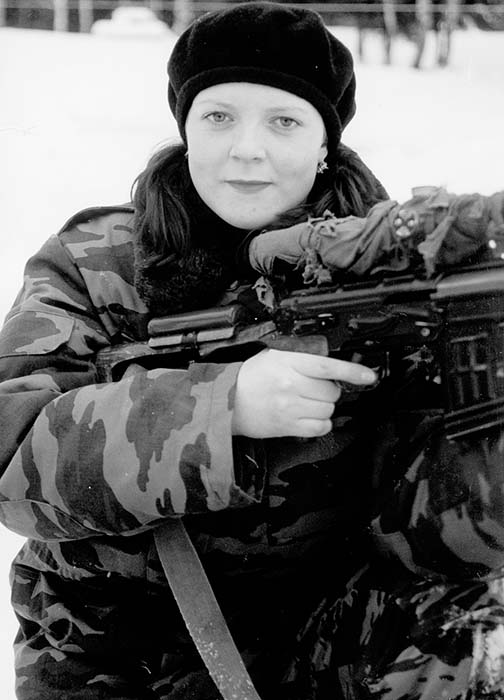
The SV-99 has a detachable buttstock, which, as may be required by a tactical situation, can be replaced by a pistol grip. The stock is made from laminated plywood. A knob located on the rear left side of the barrel and receiver assembly serves to release the stock and attach the grip. This shorter envelope is handy in a combat at close ranges. The safety lever is located at the front part of the trigger guard. Once the safety is in its rearmost position, the rifle is deactivated by blocking both action and trigger. To bring the rifle into firing order, push safety forward. The rifle is magazine fed. The plastic detachable box-type magazine accommodates 5 rounds. The rifle’s magazine port can accept 8-round and 10-round magazines. There are two 5-round extra magazines inside a special niche located inside the lower portion of the buttstock. The niche has a plastic hinged cover, which prevents magazines from unwanted dust and mud. The buttstock has a fully adjustable cheek and buttplate to ensure operator’s comfort at firing. A telescopic bipod attaches to a rail located inside the lower surface of the handguard. The threaded muzzle end of the barrel can be equipped with a compact silencer. On top of the receiver there is a dovetail rail to accommodate practically any type of a telescope. SV-99 has no iron sights. The rifle can be knocked down in a few moments, thus making it very handy for transportation in a medium-sized bag or case. Its longest assembly – a barrel and receiver with handguard – is only 520 mm long. SV-99 comes complete with the following accessories: 2 extra magazines; telescopic bipod; pistol grip; silencer; carrying sling; cleaning kit including cleaning rod.

SV-98 is a dedicated sniper weapon in caliber 7.62x54mm. It has a fully adjustable stock, a detachable bipod and can accommodate a variety of scopes and muzzle devices. 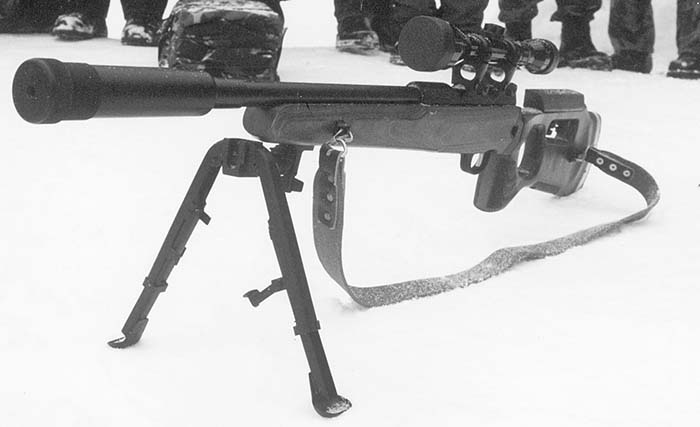
The SV-99 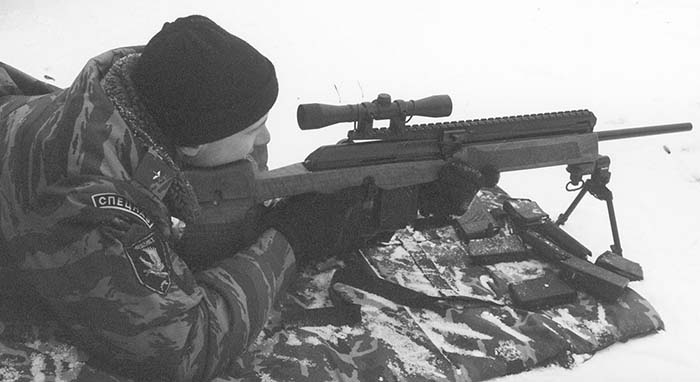
“Vepr-Super-Sport” made by the JSC MOLOT is a rifle of advanced fire support in caliber .308 Winchester. The weapon was found an interesting development, with a good potential to be adopted for service by Russian SPECOPS. 
It takes seconds to knock down SV-99 and place the gun into a simple briefcase. As may be required by the situation, the rifle accepts either stock or a pistol grip. 
AN-94 – the Nikonov Assault Rifle – fires in 2 selective rates of 1800 and 600 rounds per minute, providing exceptional hit probability, 13 times more accurate than AKM when fired in the unsupported position. The rifle is based on the Blowback Shifted pulse system. When 2 rounds are being fired, the barrel-and-receiver assembly is sliding rearwards inside the carrier-stock. The shooter receives the recoil shock, only after the 2 bullets escape the muzzle and are heading downrange toward the target. 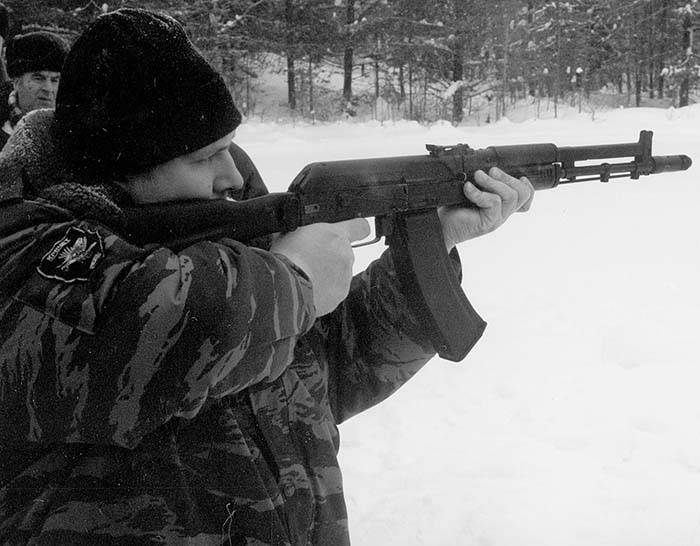
AK-107 – the Alexandrov-Kalashnikov Assault Rifle – is a revolutionary concept in gun design. Firing in the rate of 900 RPM, the rifle features the mechanism of the so-called “balanced automatics.” The gas system has 2 cylinders and 2 pistons that transmit the synchronized opposite motion of its mechanics thus significantly reducing shock impulse and enhancing hit probability. All AK74-based rifles and the AN-94 now can accommodate a newly designed 60-round, four-column, detachable high-capacity magazine. 
AK-103 in caliber 7.62x39mm – for special operations at shorter ranges between 50 to 200 meters it can be equipped with the COBRA collimator scope. 
Colonel Manvel Airyan – a professional marksman – finds the “Bizon” SMG, equipped with a cylindrical helical large-capacity magazine that accommodates 64 rounds, a very accurate and comfortable weapon. To enhance accuracy, the gun can be equipped with a collimator scope and a laser target indicator. For special “quiet” operation the BIZON accepts a tactical silencer. 
The VSK, VSS and 9A91 assault silenced rifles in caliber 9×39 mm are issue weapons of the Russian SPETSNAZ troops.
| This article first appeared in Small Arms Review V5N1 (October 2001) |



